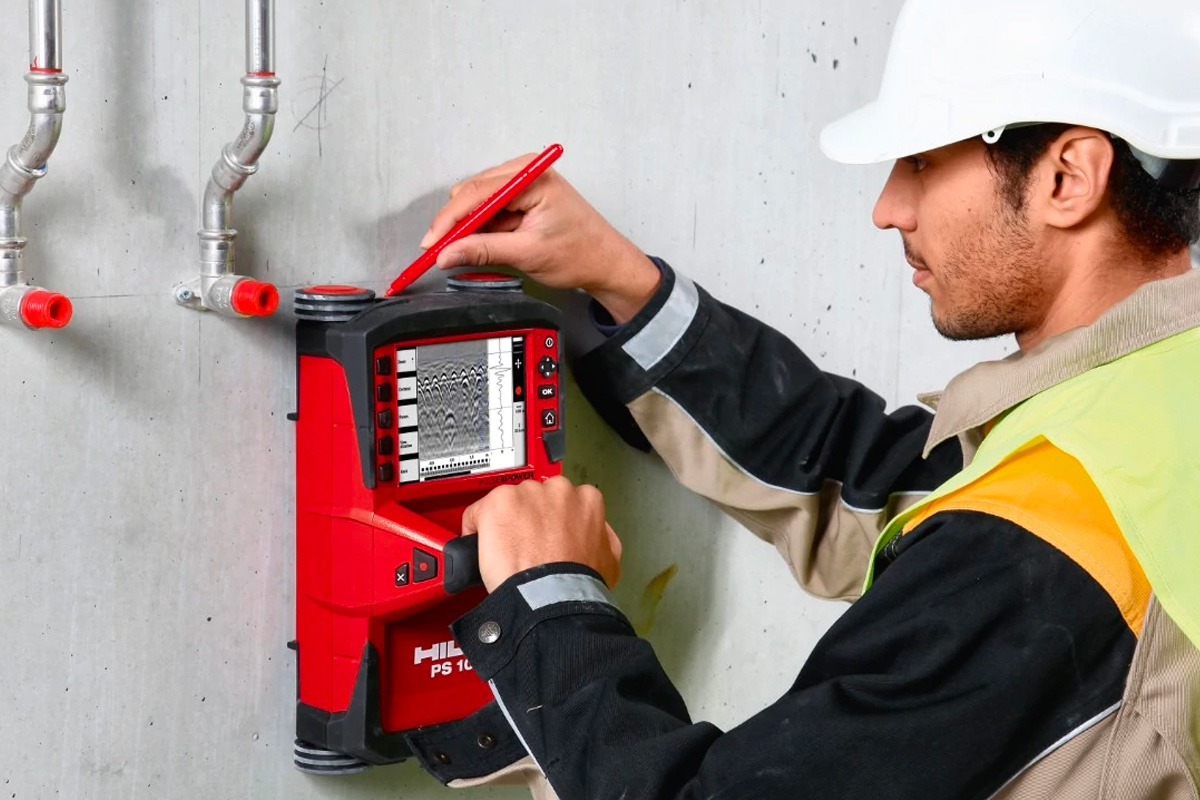Past the Surface: Leveraging Advanced Concrete Scanning Techniques for Unmatched Accuracy and Understanding
Advanced concrete scanning techniques have arised as vital devices in this pursuit, supplying a glimpse underneath the surface area to unveil a world of vital understandings. By utilizing sophisticated technologies, professionals can reveal abnormalities, assess the problem of concrete frameworks, and make educated choices that form the training course of tasks.
Importance of Advanced Concrete Scanning
The value of using innovative concrete scanning techniques exists in the exceptional accuracy they supply for spotting sub-surface abnormalities and ensuring structural integrity. By employing advanced modern technologies such as ground-penetrating radar (GPR), electromagnetic induction, and progressed finder imaging, building and construction professionals can dig beneath the surface of concrete frameworks with a level of accuracy that much goes beyond traditional evaluation methods. Concrete Scanning. These strategies make it possible for the recognition of surprise threats like rebar deterioration, gaps, avenues, or post-tension wires that can endanger the security and security of a structure in time
Additionally, progressed concrete scanning supplies invaluable insights right into the general condition of a concrete aspect without the need for invasive measures, decreasing the threat of triggering damage during the analysis process. The capacity to determine the precise location and deepness of prospective issues enables for targeted repair services and maintenance, inevitably extending the lifespan of the framework and enhancing its efficiency. Basically, the importance of innovative concrete scanning can not be overstated in the realm of construction and framework upkeep, where precision and dependability are vital.
Types of Cutting-Edge Technologies

Anomalies and Problem Detection

In enhancement to GPR, concrete scanning methods like thermography and impact-echo testing are also reliable in discovering defects and abnormalities. By leveraging these sophisticated methods, professionals can proactively resolve architectural problems, ensuring the long life and security of concrete structures.
Assessing Concrete Problem
Just how can you can look here engineers accurately assess the condition of concrete structures to ensure their longevity and safety and security? Examining the concrete condition is a crucial facet click for source of preserving infrastructure stability. Various innovative concrete scanning methods are employed for this objective. Ground-penetrating radar (GPR) is frequently utilized to examine the internal framework of concrete, finding voids, splits, and other anomalies that might compromise its toughness. Additionally, impact-echo screening can provide understandings right into the thickness and integrity of concrete components. Ultrasonic pulse velocity screening is an additional important technique for evaluating concrete top quality by measuring the rate of acoustic waves with the product.
Furthermore, aesthetic examination remains an essential component of concrete problem assessment. Engineers aesthetically check out the surface area for signs of damage, such as spalling, breaking, or discoloration. Incorporating non-destructive screening methods with aesthetic assessments allows for a detailed analysis of concrete problem, making it possible for designers to identify potential issues at an early stage and carry out timely maintenance or repair work. By leveraging these sophisticated methods, engineers can make sure the long-lasting resilience and safety and security of concrete frameworks.
Enhancing Decision-Making Procedures
In the realm of infrastructure monitoring, enhancing decision-making processes is necessary for making certain the reliable upkeep and durability of concrete frameworks. Enhanced decision-making procedures in concrete monitoring include making use of advanced scanning strategies to collect comprehensive information on the problem of frameworks. By leveraging modern technologies such as ground-penetrating radar and 3D imaging, stakeholders can make educated choices pertaining to repair, replacement, or support approaches.
These advanced scanning methods provide invaluable understandings right into the interior composition of concrete, determining possible issues such as spaces, splits, or corrosion that might not be visible on the surface. This level of thorough information enables aggressive upkeep planning, lessening the risk of structural failings and raising the overall life expectancy of concrete frameworks.
Moreover, by incorporating digital documentation and evaluation devices into the decision-making process, stakeholders can track the development of concrete conditions gradually, enabling predictive maintenance techniques and enhancing resource allowance. Eventually, the combination of innovative concrete scanning strategies boosts decision-making procedures by giving unparalleled precision, understanding, useful reference and performance in framework monitoring.
Final Thought
Finally, advanced concrete scanning techniques offer unequaled precision and understanding in detecting abnormalities, issues, and assessing the condition of concrete frameworks. By leveraging innovative innovations, decision-making processes can be enhanced, causing even more educated and reliable remedies for preserving and repairing concrete framework. These methods play a critical duty in making certain the security and durability of concrete structures, making them an essential device in the field of construction and design.
Additionally, progressed concrete scanning provides invaluable understandings into the total condition of a concrete element without the requirement for invasive steps, minimizing the threat of triggering damages during the analysis process - Concrete Scanning. An additional innovative modern technology is 3D X-ray scanning, which gives in-depth images of the interior structure of concrete, using important details without the need for devastating testing. In Addition, Concrete Cover Meters are used to gauge the thickness of concrete cover over reinforcement bars precisely. Enhanced decision-making processes in concrete administration include using innovative scanning strategies to gather thorough data on the condition of frameworks.In final thought, progressed concrete scanning strategies offer unparalleled accuracy and understanding in identifying anomalies, flaws, and analyzing the condition of concrete frameworks